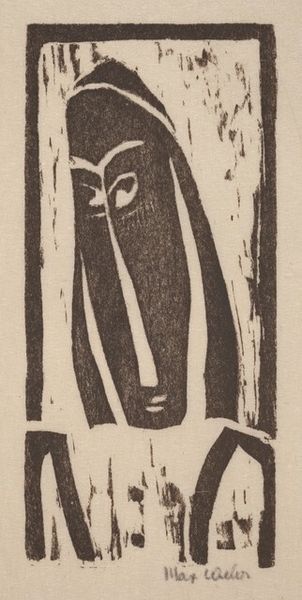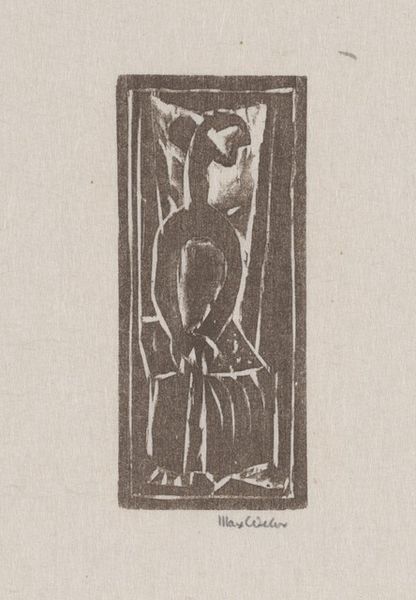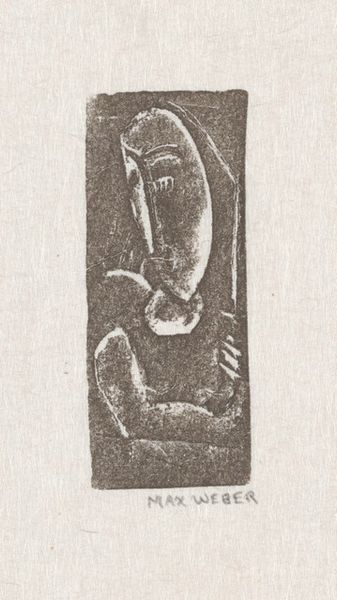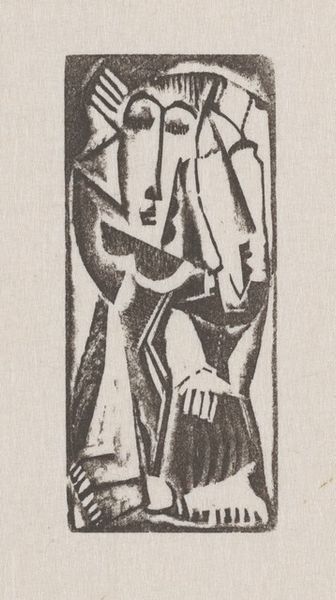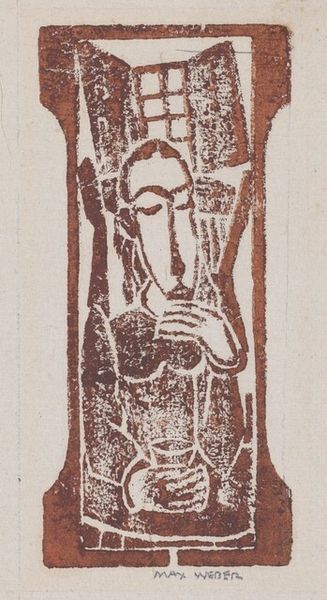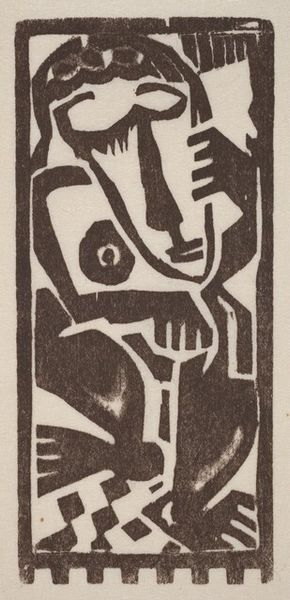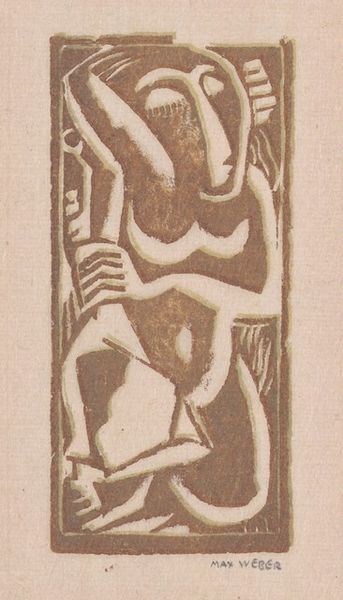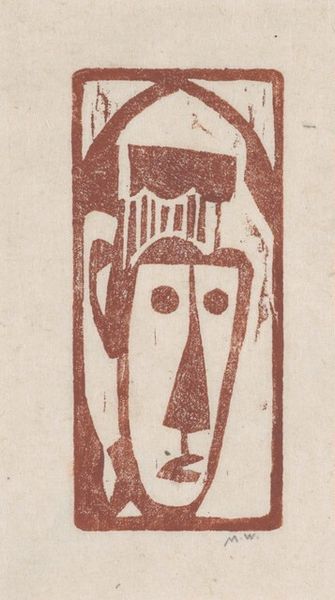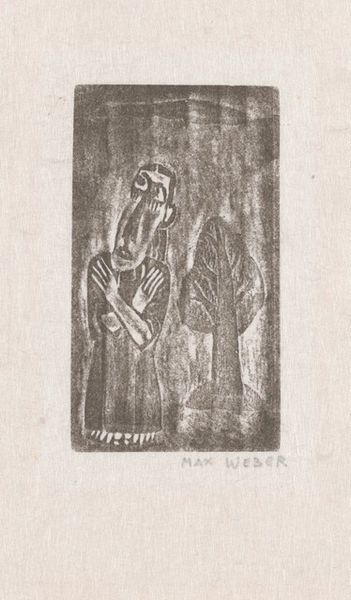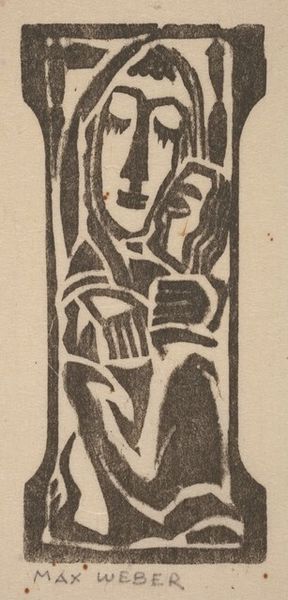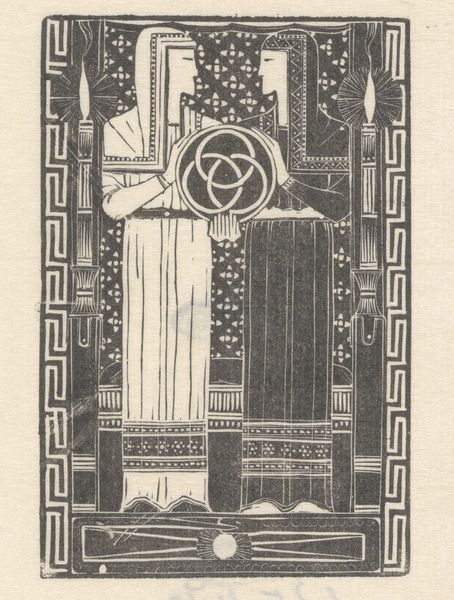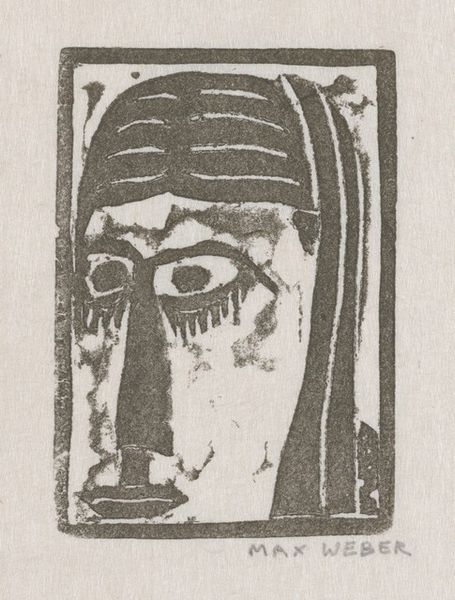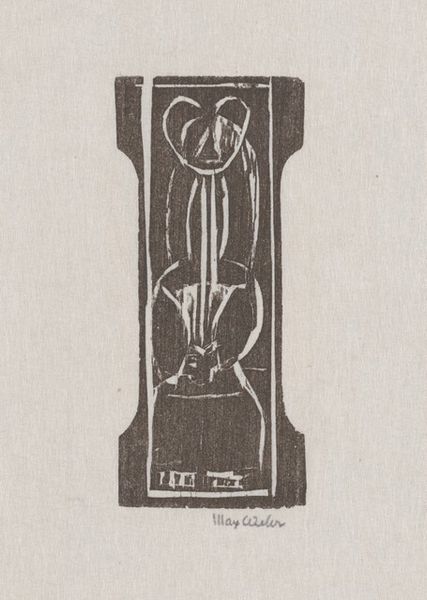
#
rippled sketch texture
#
toned paper
# print
#
hand drawn type
#
personal sketchbook
#
chalky texture
#
carved into stone
#
sketchbook drawing
#
sketchbook art
#
doodle art
#
marker colouring
Dimensions: image: 10.8 x 4.9 cm (4 1/4 x 1 15/16 in.) sheet: 20.3 x 12.7 cm (8 x 5 in.)
Copyright: National Gallery of Art: CC0 1.0
Editor: So, this is "Head of a Man," a print made by Max Weber around 1919 or 1920. The stark contrast and abstracted form give it a somewhat haunting quality, almost mask-like. What do you make of the composition? Curator: The interplay between positive and negative space is quite striking. Note how Weber uses the heavy lines to define the face, but also to create a sort of cage or framework around it. Observe the eyes. They're large, disproportionate perhaps, but command our immediate attention. The mouth is a simple horizontal dash. Do you think it conveys emotion? Editor: Not really, the eyes are doing all the work, pulling me into some sort of dramatic narrative. It makes me wonder how he made this print with such defined geometry of lines and blocks? Curator: Indeed, there's a deliberate construction, almost architectural in its rigidity. We can explore its linear elements as pure forms, and see how Weber created meaning simply by how the picture plane is arranged. Editor: So you're suggesting that understanding the subject might be less crucial than considering how shapes relate to one another? The heavy lines around the head are the figure contained or free flowing to the surrounding geometric framework? Curator: Precisely. Meaning resides within the formal relationships on display: contrast, balance, tension. It may prove valuable for one to spend some time examining the relation between figure and ground to enhance understanding of spatial complexities that are generated with just several geometrical relations. Editor: That really shifts my perception. I was so focused on what the head might represent, but now I appreciate how the structure itself dictates the feeling of confinement and tension, I see the value in limiting outside narrative influence by first observing visual cues from formal and relational perspectives. Curator: Indeed, let us look past any representative meanings and find beauty in its geometrical form that stimulates aesthetic sensibility.
Comments
No comments
Be the first to comment and join the conversation on the ultimate creative platform.
